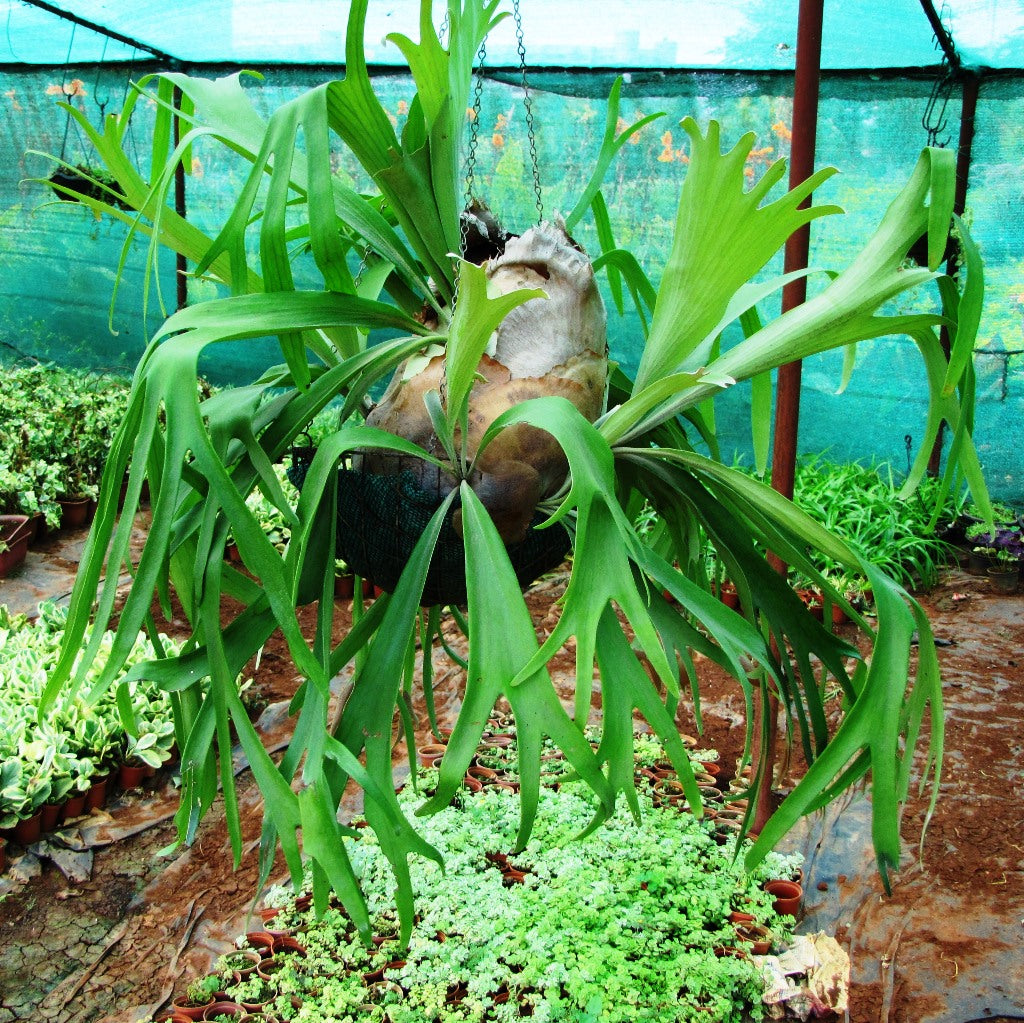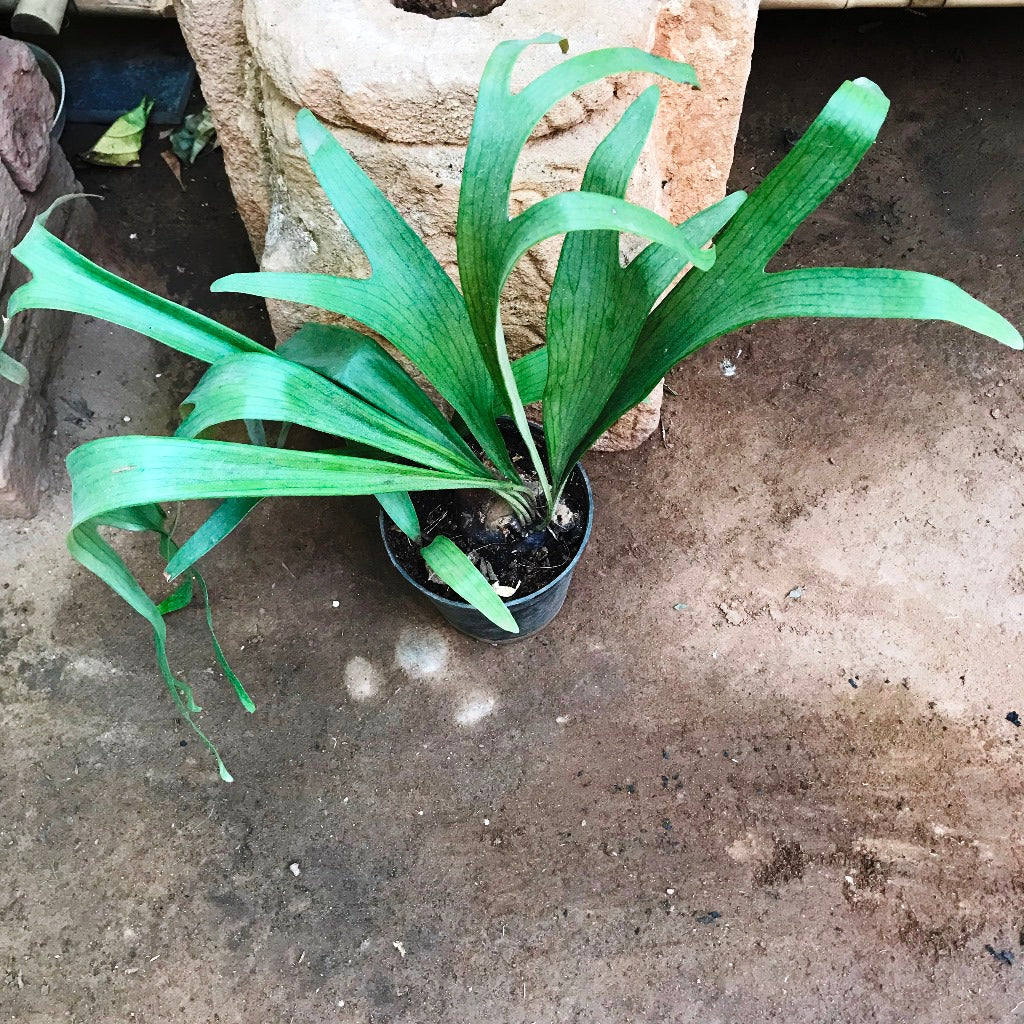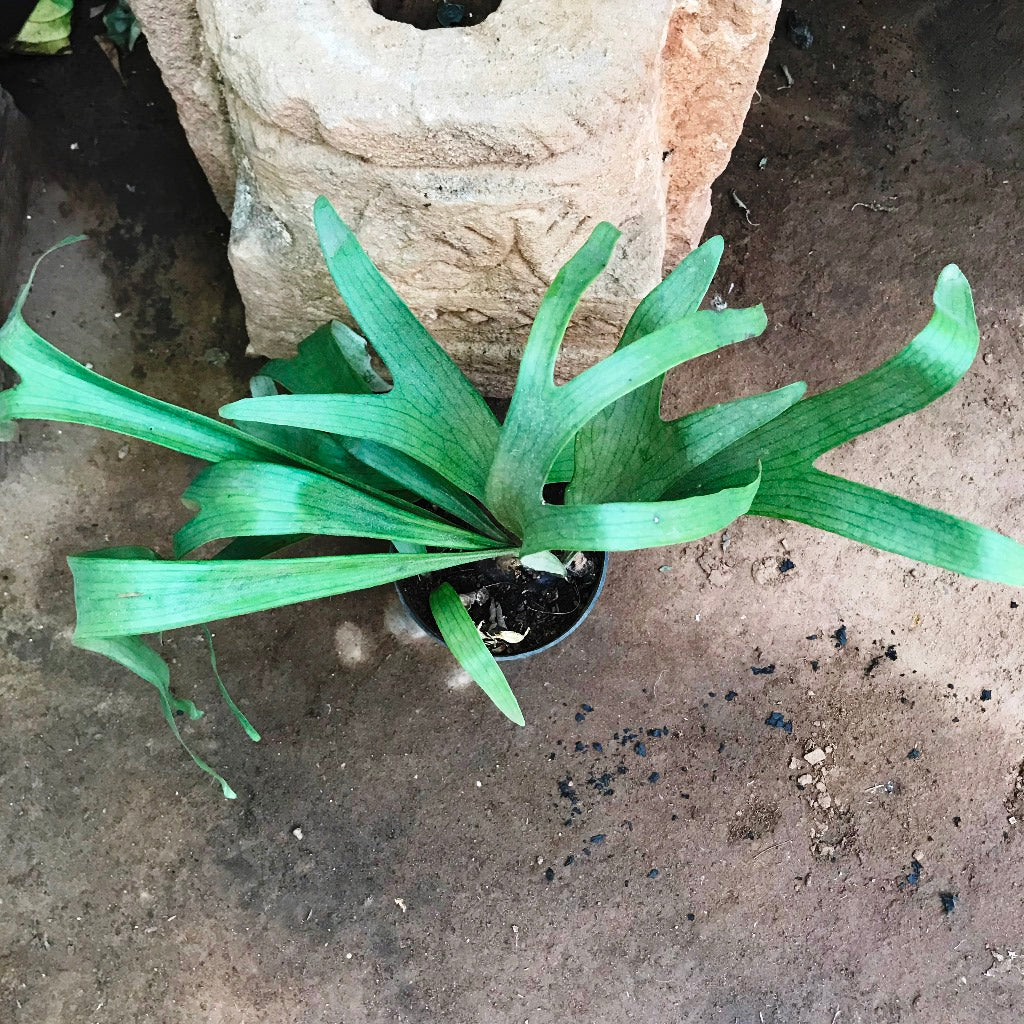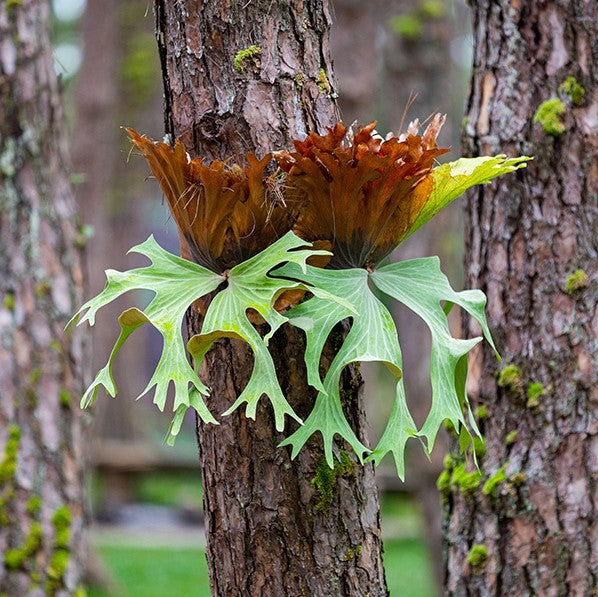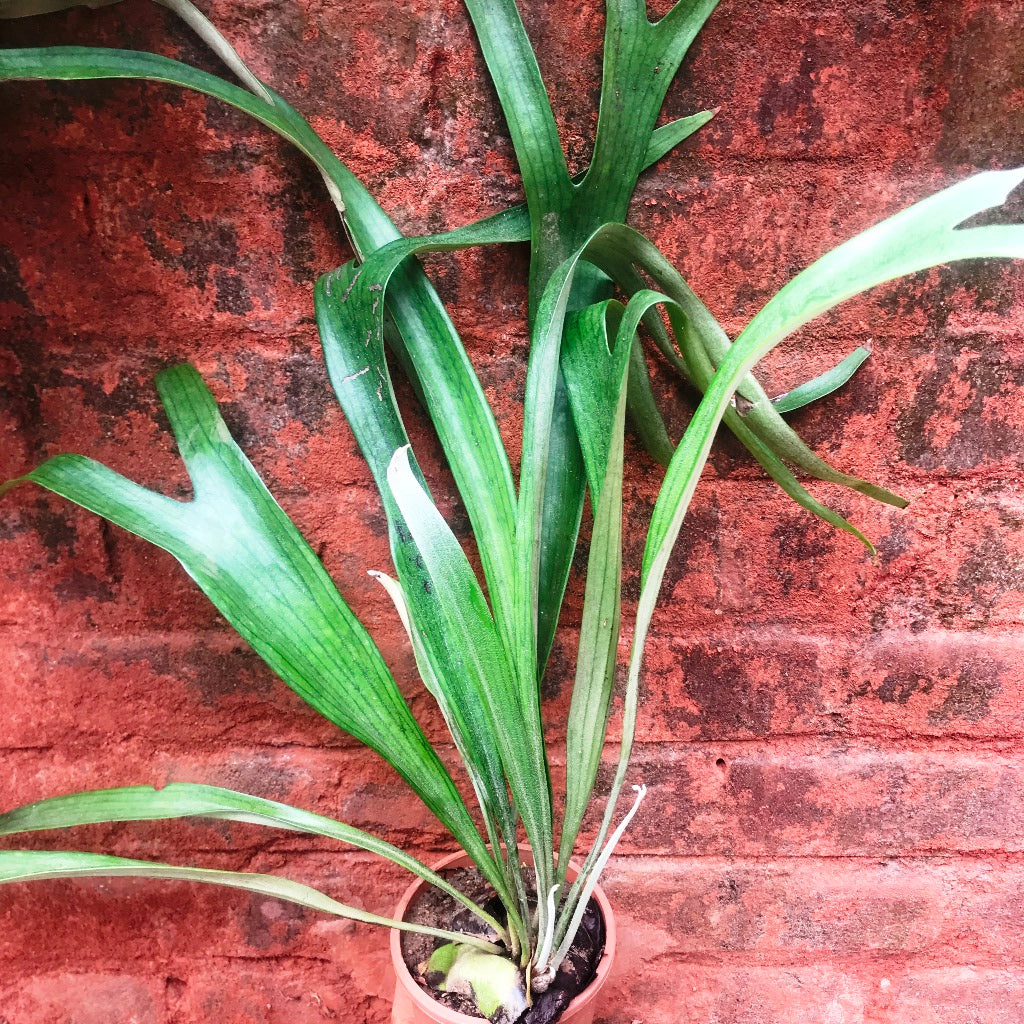Elkhorn ferns
Family
Polypodiaceae
Origin
Asia & Australia
Description
The Staghorn Fern is an unusual plant, being both an air plant and a fern, though it bears little resemblance to most ferns.
They have two distinct leaf forms—small, flat leaves (known as shield fronds) that cover the root ball structure and take up water and nutrients; and grayish green, pronged antler fronds that emerge from this base and can reach up to 3-4 feet in length indoors (and larger in the wild).
Environment
Platycerium grow best in bright indirect light. These plants can tolerate hotter conditions, but tend to prefer the range between 60-80 degrees as an optimal zone
As an epiphitic plant, it has roots which grasp onto wooden surfaces to hold them in place. Water is absorbed directly through the leaves of the plant. While the roots need water as well, they do not need it as often. Secure the plant to board, or use peat or sphagnum moss, coconut coir, or an extremely well-draining potting soil
Water sparingly, increasing frequency during hot/dry periods. Monthly applications of a diluted balanced fertilizer during spring and summer. Every other month through fall /winter. If the tips of antler fronds begin to brown, fern is under watered, and one should increase the frequency of watering. If the bases of the antler fronds begin to blacken, plant is being over watered, and there is need to cut back the frequency.
More humidity will generally mean less watering is necessary. Placing the plant in a bathroom or other humid location will help keep it happy without needing to water.
Landscape Use
The Staghorn fern looks much different and makes an excellent hanging specimen.

